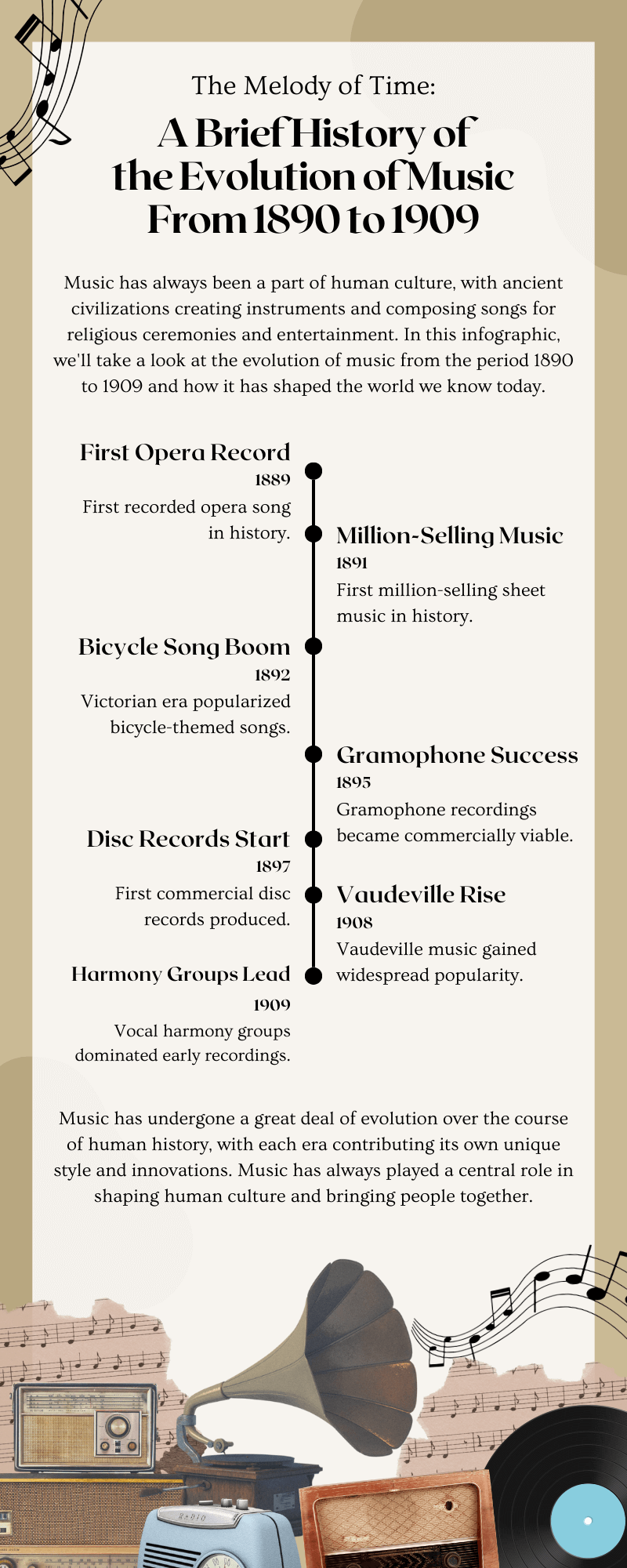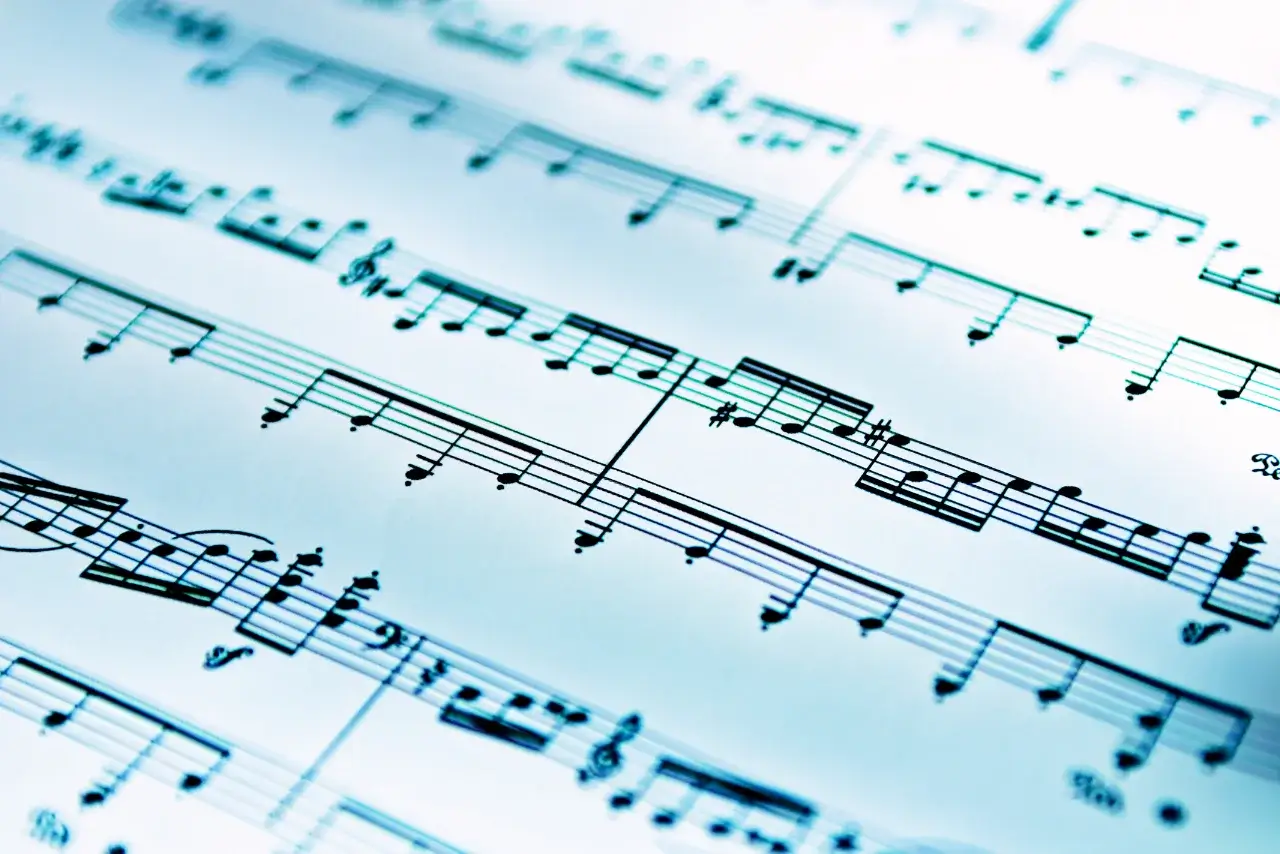Music reaches deep into our hearts, touching our souls with its beauty and poetry. It can also be a source of comfort and healing, providing relief from the stresses and pains of life. That is why, on our blog, we love to share with you what we think are marvelous tunes from both the present and the past. I personally am a fan of music from decades ago, even as far back as the 1900s, and even prior. It wasn’t until the gramophone was invented that music began to take on the possibilities of being spread throughout the country and world. In this post, we present you some of these delights of the past, specifically music from the 1880s, when the first recordings were made, up to the first decade of the 1900s.
As you listen to these historical gems, take a moment to appreciate the groundbreaking artists, composers, and technologies that made them possible. These early recordings serve as a bridge to the past, preserving the sounds and stories of a world that continues to resonate through the ages.
This post contains affiliate links. Please read our disclosure.

The 1880s was marked by significant technological and cultural developments. One of the most notable advancements was the invention of the phonograph by Thomas Edison in 1877, which revolutionized the way music was recorded and listened to. By the 1880s, phonographs became more widespread, allowing people to enjoy music in their homes for the first time.
This decade also saw the rise of popular music genres such as ragtime, which began to gain prominence in the United States. Ragtime’s syncopated rhythms and lively melodies laid the groundwork for future developments in jazz and other American music styles. Notable composers such as Scott Joplin, Buddy Bolden, Jelly Roll Morton, et al., emerged, contributing to the genre’s growing popularity.
In classical music, the 1880s were a time of great creativity and innovation. Composers such as Johannes Brahms, Pyotr Ilyich Tchaikovsky, and Antonín Dvořák were at the height of their careers, producing some of their most enduring works. The era was also characterized by the late Romantic style, which emphasized emotional expression and complex harmonies.
The musical talents of these singers and musicians opened up a wide array of possibilities for artists in the following decades, and in our post, we cover some of these creations, taking you to the very beginning of recorded music.
When Were the First Recordings Made?
The first recordings were made in the late 19th century, with Thomas Edison inventing the phonograph in 1877. This groundbreaking device used a tinfoil cylinder to capture sound vibrations, marking the beginning of recorded music. Edison’s phonograph was initially intended for business use, such as dictation and office tasks, but its potential for recording music quickly became apparent.
One of the earliest known recordings is Edison’s recitation of “Mary Had a Little Lamb,” made in 1877. This iconic recording demonstrated the phonograph’s ability to capture and reproduce sound, sparking interest in its potential applications.
In 1887, Emile Berliner introduced the gramophone, which used flat discs instead of cylinders. This innovation made recordings more durable and easier to produce, paving the way for the widespread distribution of recorded music. Berliner’s gramophone discs became the standard format for recordings, eventually leading to the development of the modern record industry.
By the 1890s, the first commercial music recordings began to appear. Early recording artists included popular vocal groups like the Haydn Quartet and solo performers such as George W. Johnson, whose song “The Laughing Song” became one of the first recorded hits. These early recordings laid the foundation for the music industry, capturing the voices and performances of the time for future generations to enjoy.
The transition from experimental recordings to commercial viability marked a significant shift in how people consumed music, making it more accessible and paving the way for the rich and diverse musical landscape we know today.
Now that we’ve covered a bit of history of the musical scene of that time, let’s learn about and listen to these historical relics.
1.
1909 | Haydn Quartet – “Put On Your Old Grey Bonnet”
The Haydn Quartet was a leading vocal group of the early 20th century that captivated audiences with their harmonious performances. “Put On Your Old Grey Bonnet,” a nostalgic tune from 1909, is one of their memorable recordings. This song evokes the simplicity and charm of a bygone era, reminding listeners of the timeless tradition of romantic courtship. Listen to it here
2.
1908 | Harry Macdonough & Elise Stevenson – “Shine On, Harvest Moon”
Harry Macdonough, one of the most prolific recording artists of the early 20th century, teamed up with soprano singer Elise Stevenson to create this enchanting duet from 1908. This song became a vaudeville favorite and remains a cherished classic, capturing the essence of a moonlit romance. Listen to it here.
3.
Emile Berliner, the inventor of the gramophone, recorded “The Sidewalks of New York” in 1895. This song, also known as “East Side, West Side,” quickly became an anthem for the city, celebrating the bustling streets and vibrant life of New York at the turn of the century. Listen to it here.
4.
Tom Roush brings to life the timeless classic “Listen to the Mockingbird,” originally composed in 1855. This song, with its beautiful melody and evocative lyrics, has been a favorite through the generations, often stirring memories of simpler times and the beauty of nature. Listen to it here.
5.
1889 | Peter Schram – The First Recording of an Opera Song
In 1889, Peter Schram made history with the first recording of an opera singer, marking a significant milestone in the world of music. This recording captures the grandeur and elegance of operatic performance, offering a rare glimpse into the early days of recorded music. Listen to it here.
6.
Composed by Harry Dacre in 1892, “Daisy Bell” is a charming song inspired by the sight of a tandem bicycle, or “sociable.” It narrates a man’s proposal to his beloved Daisy, suggesting they ride together on a bicycle built for two. Dacre wrote the lyrics and melody, but it became widely known through various performances and recordings by different artists over the years. Notably, it was sung by the HAL 9000 computer in the 1968 film 2001: A Space Odyssey. “Daisy Bell” remains a nostalgic piece associated with the Victorian era’s fascination with bicycles. Listen to it here.
7.
1891 | Charles K. Harris – “After the Ball”
Charles K. Harris was an American songwriter, often hailed as the father of the popular song. He was one of the first to achieve major commercial success in the music industry with his self-published compositions. His most famous song, “After the Ball,” written in 1892, became the first sheet music to sell over a million copies. This song scaptured the hearts of listeners with its tale of love, misunderstanding, and regret. A quintessential ballad of the Victorian era, it was often performed in parlors and theaters, becoming one of the most iconic songs of the late 19th century. This emotional masterpiece offers a glimpse into the storytelling traditions of early popular music.
Listen to it here.
8.
1893 | George W. Johnson – “The Laughing Song”
George W. Johnson, recognized as one of the first African American recording artists, achieved widespread fame with his jovial tune “The Laughing Song.” This 1893 recording captivated audiences with its infectious melody and Johnson’s unique laughter, earning it a place in music history as one of the earliest hit records. The cheerful nature of this song provides a delightful contrast to the more somber pieces of its time. Listen to it here.
9.
1904 | Enrico Caruso – “Vesti la giubba”
The legendary tenor Enrico Caruso was among the first classical singers to embrace the gramophone, bringing operatic music to a wider audience. In 1904, he recorded “Vesti la giubba” from Ruggero Leoncavallo’s opera *Pagliacci*. This recording showcased Caruso’s unmatched vocal power and emotional intensity, cementing his status as a global icon and a pioneer in recorded music. Listen to it here.

